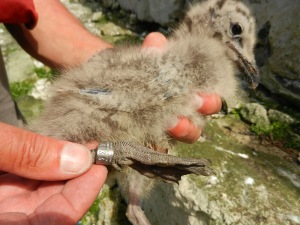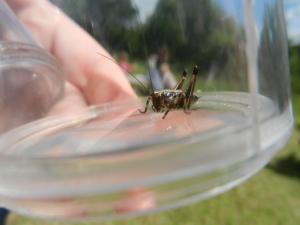Adventures and Learning
I’m writing yet another blog post whilst tired and in recovery from a fantastic few days. Seems to be the way of life for me at the moment, but I’m not complaining!
The week began with office work, which I might have previously thought to be a bit boring. However, I’m working on some exciting projects so the office work is actually enjoyable, especially as I know that the projects will have good end results (fingers crossed!). Additionally I was still buzzing from the AFON conference the week before (hugely inspirational and amazing and such!).
It wasn’t all office work mind, I was instructed to go explore some of RWT‘s nature reserves aside from Gilfach. So I took myself off to Llanbwchllyn Lake, where I had an enjoyable time admiring the lake and the wildlife. I saw one of my favourite birds, the Great Crested Grebe, which is a species that I’ve not seen in ages so I was rather happy.
- Funky looking mushroom
- Great Crested Grebe family
I also took the time to really appreciate nature, sitting and closing my eyes, listening to the sounds around me – the rustling leaves, the babbling of a bird, the buzzing of the insects. It was nice to take a step back from my usual stance of taking photos of everything and trying to identify everything, and just appreciate it being there. I did also my eyes again to take photos (but without trying to identify the animals).
- Spider
- Cricket / grasshopper
- Bumblebee
The reason I’m so tired is that I’ve just got back from a three day ecology course on Animal Diversity, held at the lovely Denmark Farm Conservation Centre. Wow, what a course! My head is absolutely full of fascinating information and interesting facts – sea urchins have a funky anatomical feature called ‘Aristotle’s Lantern’, over 95% of all animals are invertebrates, and platypus (platypi plural?) are really rather odd!
- Elephant tooth (my odd looking hand for scale)
- Turtle skull
- Lugworm specimen
- My bumblebee lifecycle
- Small Tortoiseshell Butterfly
I’d like to take this opportunity to say just how awesome these ecology courses are – they’re provided by the Lifelong Learning department of Aberystwyth University, and they are such fantastic value (£80 early bird for a 10 credit module)! I have done a number of modules now, and I am working towards getting my Certificate in Field Ecology, which is rather exciting. However, the modules can just be taken separately, and even just for fun! Because I love them so much, I have now become a Student Rep for the Ecology courses, so looking forward to getting even more involved with them!




























